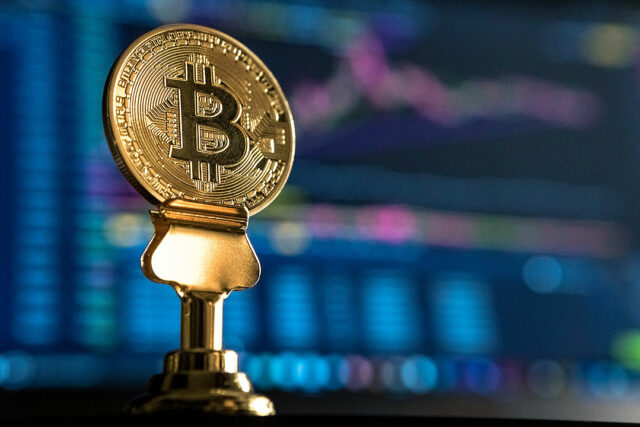Blockchain and new trends in money


(Part 1)
For 2020, our overall economic freedom index, as monitored by Canada’s Fraser Institute, fell three places from 2019’s 7.34 to 2020’s 7.09. Five aspects were assessed as markers of our economic freedom, namely good money, size of government, legal system and property rights, freedom to trade internationally and regulations. The Philippines managed to rank 66thth of 165 countries covered in the survey. In ASEAN, the country shared the 66th place with Indonesia, surpassing only Thailand, Vietnam and Myanmar. The remaining six ASEAN countries topped the Philippines.
Apart from good money, a tribute to the Bangko Sentral ng Pilipinas (BSP) and the banking system, all four other components declined from 2019 to 2020.
For good money, the Philippines scored higher, from a previous 9.56 to 9.58, reflecting appropriate money growth, stable inflation and more freedom to open and maintain foreign currency bank accounts.
But for the next two years, based on recent inflation trends, this aspect of economic freedom is likely to slide down. To top it off, inflation had reached its highest point in four years. Unless there are some compensatory improvements in the proper sizing of government and public spending, the maintenance of the rule of law and the fight against corruption, further liberalization of international trade and sensible regulation of the system, we are likely to goetcis another downgrade of economic freedom next year.
But these aspects of monetary soundness in the Philippines are now actually challenged by how the monetary regulators would respond to the proliferation of global cryptoassets. We see the new trends in money.
A large part of the BSP’s view on cryptoassets stems from the current understanding of the advantages and disadvantages of using virtual currencies, that they are easy to set up, anonymous, transparent and fast in the settlement of transactions. But virtual currencies are said to be volatile, the issuance of securities cannot be ignored, and they can be used for illegal activities. Virtual currencies running on blockchain technology are potent when it comes to innovative money transfers, payments, exchanges, investments and fundraising exercises.
The BSP’s current involvement with cryptoassets is limited to registering virtual currency exchanges, imposing transaction limits on the use of cryptoassets, prescribing controls in operations, technology use, consumer protection, wallet management and anti-money laundering compliance. Reporting requirements are also imposed on those registered with the BSP, which has the power to sanction them for certain violations.
It would also be helpful to know where the BSP stands on some myths about cryptoassets. In its public communication, the BSP believes that crypto-assets are not legal tender, it is something that is not supported by any legal authority in contrast to fion money. It is not true that the BSP thinks that crypto assets are bad, they are just neutral fion money. Therefore, BSP has clarityfied that it does not support crypto-assets, but is prepared to address their risks when they converge with fifinancial institutions at some point.
Instead, what the BSP has done in recent years is to ensure that an enabling environment for crypto-assets is put in place. Crypto education is essential for the public’s better understanding of the new medium of exchange and perhaps in the future, the store of value. The overarching interest of the regulator is the virtual assets’ potential to improve the delivery of financial services given faster and cheaper money transfers both here and abroad.
Five years ago, Allyze McGrath and Dennis Ferenzy of the Center for Financial Inclusion argued that “contrary to popular rhetoric, banks do not optimally view FinTechs as competitors. Increasingly, they seek them as partners.” And since then, this has been the trend in many emerging markets, including the Philippines. The relationship has become what they called symbiotic rather than combative. By working together, FinTechs are able to scale their technology and access capital at the same time fifinancial institutions get some help to improve their product lines, increase efficiency and reduce costs.
As it turned out, such convergence of interests serves the cause fifinancial inclusion with the added benefit of improved risk mitigation and a wider scope of financial products and services that are nothing short of innovative and cater to their clientele. If there are more adjustments to be made, it is the banks that may have to do it. Their internal processes may need some innovation, some are divorced from IT and the information it can provide. What they need to move forward is to develop mutual trust, especially on the part of the banks. They should be more open to what FinTechs can do for them by leveraging data, evaluating risks and even pursuing customer relationships.
There is concrete evidence that this partnership is producing some positive results.
In Kenya and Argentina—as Cecilia Chapiro of the UNICEF Innovation Fund told Stanford Innovation Review on November 24, 2021—cryptoassets’ blockchain technology platform, one that is digitally distributed and delegated across a network, is building more robust and prosperous lives through greater access to financial services. While credit cards and bank accounts have made the payment and settlement of business transactions possible, much of the world’s population is still beyond the reach of financial services. Chapiro cited the World Bank’s estimate that about 1.7 billion people or 31% of all adults are “unbanked.” In developing economies, the proportion can be as high as 61%.
These were the segments of the population that the traditional banking system has left behind. Chapiro called them financially challenged since they have limited ways to send or receive money, open and maintain bank deposits, access credit or obtain insurance coverage.
It was blockchain technology that literally broke the barrier and effectively extended financial inclusion to more people in the world. More and more people should be brought to the mainstream. A new way of organizing transactions between untrusted parties without the need for an intermediary, such as a bank, all transactions are intended to be “immutable, transparent and encrypted.”
We don’t have to go far to check how it developed.
In the Philippines, the starting point has been the broad concept of economic education and inclusion. Digital transformation increased the shot, and recently financial institutions have increasingly partnered with FinTech towards the end considering the possible deployment of artificial intelligence (AI) and robotics. Still early in the game, but what one might envision is a financial setting with instant payment, the so-called “anytime, anywhere” services, dedicated products and, of course, virtual currencies or crypto-assets. Some visionaries would even think of making all these financial services by invisible banks.
We are witnessing some of the new trends.
Digital banks have risen after branch banking became modal. Self-service digital channels such as e-banking have become more popular among tech-savvy youth and young professionals. The activators have also risen. Internet providers have mushrooms, including the telecommunications companies. Smartphones and other digital gadgets have made it more convenient to do business even when you are mobile.
Therefore, cooperation with FinTech companies has enabled banks to reinvent themselves. Their financial services have been innovated, multiple products on digital platforms have multiplied, including those made available to previously unbanked individuals and families.
Using AI and robots should become more crucial for bank-FinTech partnerships to be saved. Compliance with new data protection and consumer protection laws and regulations is putting further pressure on their bottom lines. The demand for technology-savvy employeesff is almost unstoppable, but it would be a collateral damage to the other staffetc due to redundancy.
What other trends are we seeing?
As of the third quarter of 2021, the number of managers isfithe number of banks has grown, but ATM growth was greater. Several branch-lite units have risen. The so-called bank access points increased by almost 85%. From just 34, banks with digital on-boarding capability are now 49. Both the number of depositors and the amount of deposits also rose from 2020 to the third quarter of 2021.
Most importantly, digital payments grew by leaps and bounds. PESONet transactions, which are settled in batches at the end of the day, increased by more than 141% in volume and almost 73% in value. InstaPay transactions, which are cleared in real time, increased by 120% in volume and 144% in value. Such digital protection brought the share of digital payments to total payments from 14% to 20% in volume and from 24% to 27% in value within a year.
But perhaps the most disruptive dimension of digital transformation is the impact of blockchain technology on banking and, more fundamentally, on the concept of money. Bitcoins, Ethereum and Ripple are gaining more followers than ever before. Challenging fithat money is the next game in town.
(To be continued.)
Diwa C. Guinigundo is former Deputy Governor of the Monetary and Economic Sector, Bangko Sentral ng Pilipinas (BSP). He served BSP for 41 years. In 2001-2003 he was Alternate Managing Director at the International Monetary Fund in Washington, DC. He is the senior pastor of Fullness of Christ International Ministries in Mandaluyong.

























